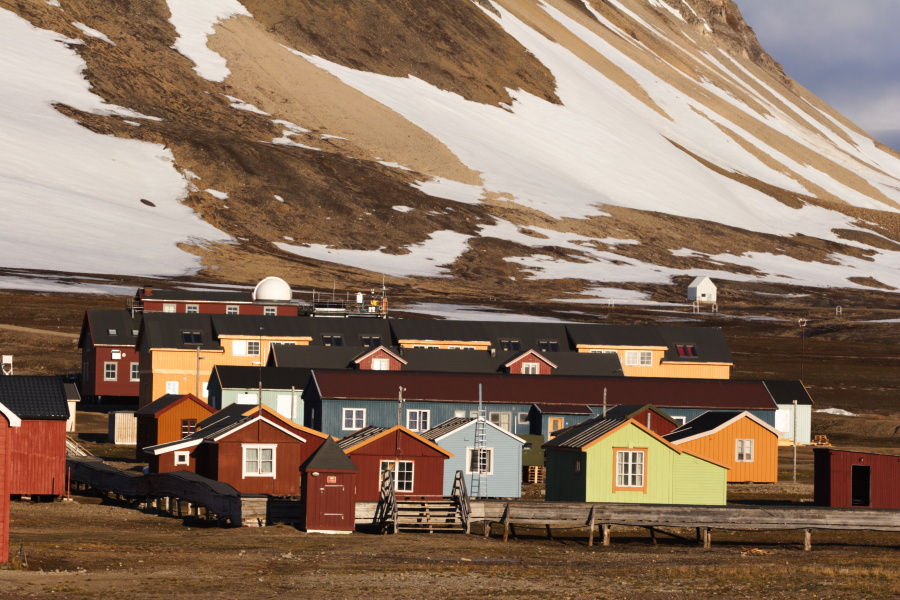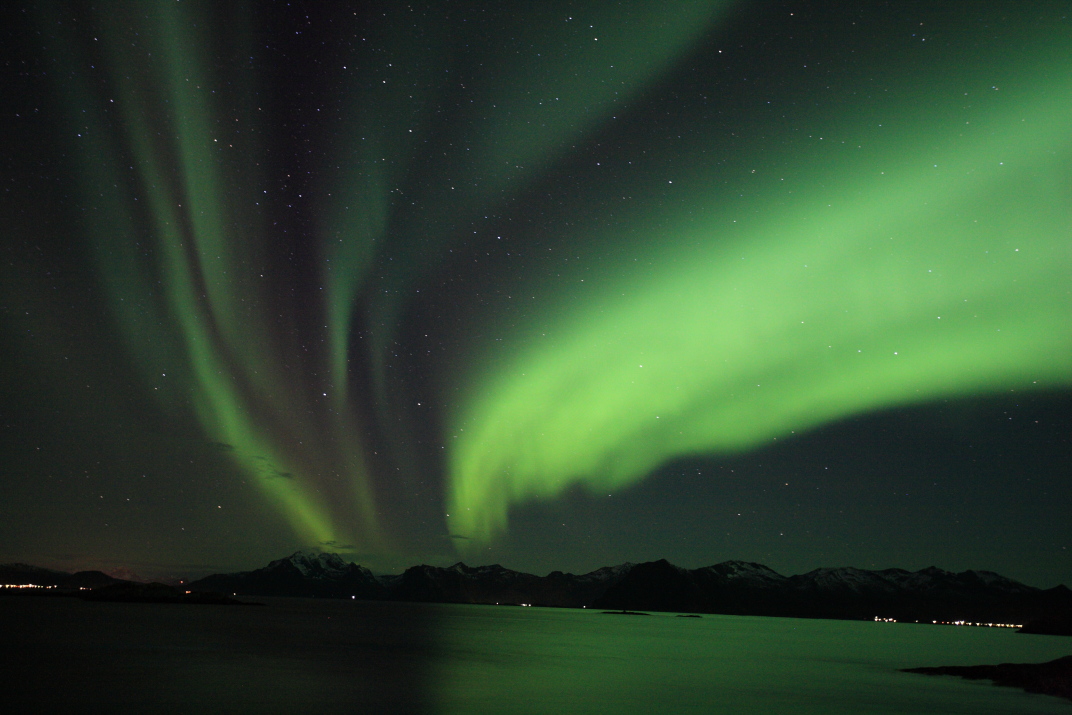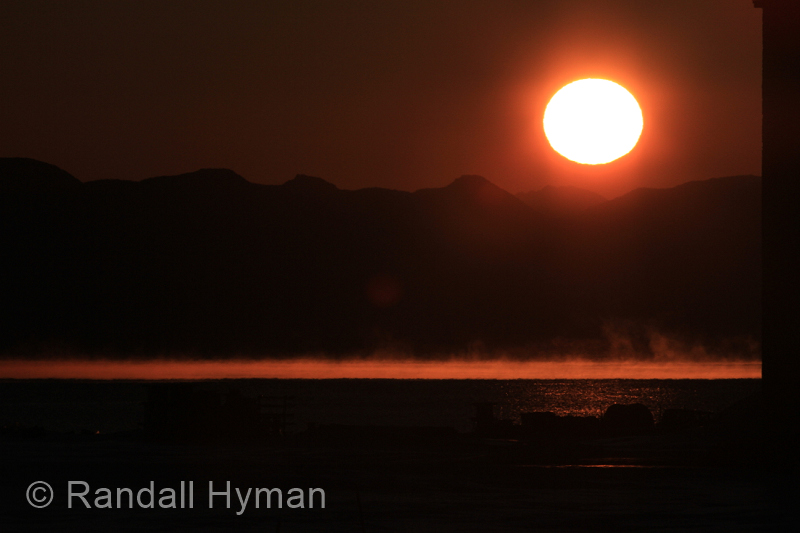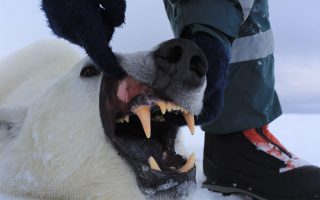Three months after visiting in the grips of winter, I am back in Ny-Ålesund (Svalbard) in the High North above the 78th latitude. The landscape has dramatically changed since mid April — see earlier posting, It takes a village (aka science base) — when a silky sheet stretched across Spitsbergen Island, covering glaciers and mountains in seamless white undulations. From the air, the island is now an abstract collage of black and white. Jagged crevasses slice across glaciers like bony ribs on a hungry animal as the relentless sun melts away winter fat and crystalline blue melt waters fill the gaps. Rivers pour from beneath glaciers and from mountain valleys, pumping clouds of ocher and gray silt into the fjords.
Ny-Ålesund itself is only recognizable because the buildings are the same, but what was ice and snow in April is now green mosses and gray rock teeming with barnacle geese, arctic terns, phalaropes, buntings, wagtails and sandpipers. Once a coal mining town, Ny-Ålesund is now both science base and history museum, with all original buildings protected as cultural landmarks. Over a dozen nations maintain research stations in these buildings, many of them countries that would have no access to Arctic research were they not signatories of the Svalbard Treaty, which grants equal land and sea rights to all treaty members.
CLICK BELOW TO SEE THE VILLAGE AND RESEARCH IN SUMMER:

Stark landscape emerges as snow melts around the Ny-Ålesund science base in Svalbard, Norway. © Randall Hyman


































